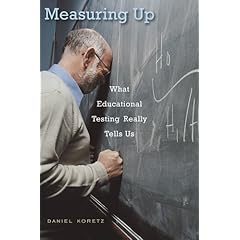We do.
Well, maybe we don't, but we need a lobbying group, that's for sure. Like AARP.
A while back
Liz Ditz posted the classic observation about the difference between a group of parents with a concern (an organization) and just one parent with the same concern (a lunatic),
* and I think that's the essence of politics.
Competing interest groups are what politics is about.
Remember
Robert Caro on Robert Moses?
[I]n local politics the various "actors" - banks, governments, unions, political machines, and so on - typically have a converging interest in extracting more money from taxpayers to use as they see fit and to manage their relationships with one another.
In the case of Robert Moses, there were 5 Actors: Moses, the banks, the labor unions, construction companies, and the Democratic machine.
Moses wanted to build parks, highways, and bridges; banks wanted deposits of funds to pay for parks, highways, and bridges; construction companies and unions wanted contracts to build parks, highways, and bridges; the Democratic machine wanted jobs on Moses' parks, highways, and bridge projects to dispense to members of the Party. (Moses was himself a Republican.)
Taxpayers weren't asked whether they wanted or needed all of these things; in some cases the projects Moses undertook were not only unwanted by voters but were actively opposed.
These entities—Moses, the banks, the unions, the construction companies, and the Democratic machine—weren’t the same entity; they had the potential for conflict. What prevented conflict – what kept operations smooth and conflict-free – was money.
Taxpayer money.
The people who were footing the bill were the one entity that did not have a voice.
Same thing in schools. Parents don't have a voice; ditto taxpayers. A couple of minutes ago I tried to log onto edline to get the agenda for the school board meeting tonight, and it turns out I can't log on because all of my kids have changed schools, so I have to get a new activation code. That's the rule.
Which, of course, raises the issue of how taxpayers who don't have kids in the schools get hold of public documents....and the answer is that while I'm sure they can, because I remember one of the principals telling me they could, it's not easy.
I've been thinking about this in light of the ferment in the Democratic Party, where the teacher's union looks to be no longer allied -- or not so closely allied -- with civil rights groups.
That's a good thing as far as I'm concerned, but you could disband the unions tomorrow and parents & taxpayers would have no more influence over public education than we do now. Given the fact that there are numerous cases in which union interests coincide with student and parent interests, we'd probably have less.
Here's Nicholas Lemann on Arthur Bentley's book,
The Process of Government:
[Bentley argued that] all politics and all government are the result of the activities of groups. Any other attempt to explain politics and government is doomed to failure. It was, in his day as in ours, a wildly contrarian position. Bentley was writing “The Process of Government” at the height of the Progressive Era, when educated, prosperous, high-minded people believed overwhelmingly in “reform” and “good government,” and took interest groups to be the enemy of these goals. The more populist Progressives liked having the people as a whole decide things by direct vote; the more élitist Progressives wanted to give authority to experts. But Bentley, who seems to have shared the Progressives’ goal of using government to curb the power of big business, rejected such procedural tenets. In Chicago terms, Bentley was the rare Progressive intellectual who believed, in effect, that the machine had a more accurate understanding of how politics worked—how it always and necessarily worked—than the than the lakefront liberals did.
Bentley’s reputation soared in the years after the Second World War, and there’s a reason. His presentation of politics as a never-ending, small-bore struggle for advantage among constantly shifting coalitions of interest groups, which appalled the Progressives, was appealing in the wake of Hitler and Stalin. Big ideas about the collective good had come to seem scary—the prelude to mass murder. Bentley spent the last years of his life being honored. Students of American politics read “The Process of Government” alongside Tocqueville and the Federalist Papers.
But pluralism—the name for Bentley’s theory of politics—has always been good for starting an argument. The standard objections are that pluralism gives too little weight to the power of ideas and of social and economic forces, and that it leaves no room for morality. (Pluralism’s equivalent in foreign relations is realism, which strikes people who don’t like it as having the same flaws.) What if there actually is such a thing as a policy that’s right on the merits? Shouldn’t we find a way to make sure that it’s enacted, instead of having to trust in the messy workings of the political marketplace? If politics worked the way Bentley thought it did, wouldn’t the richer interest groups buy themselves disproportionate political power? To a lot of people, pluralism sounded like pessimism. It was during the nineteen-sixties, when reform was again in the air and impatience with traditional forms of politics was on the rise, that “The Process of Government” began to fall out of favor.
Bentley’s insights are almost entirely missing from political discussion these days. Only in the realm of foreign policy is it permissible even to use the word “interests” in a positive way, and then they must be vital national interests. In domestic policy, interest groups (and particularly those in that ill-defined but malign category known as special-interest groups) are always the bad guys. So are their representatives in Washington, the lobbyists. We’re inclined to think that the wheedling of interest groups—tree-hugging anti-free-traders, the Sugar Association, AIPAC—distorts politics. (For Bentley, the workings of interest lakefront liberals did. groups—in interaction with one another—constitute politics.) When a politician speaks at an interest group’s convention, we want to hear that he has somehow challenged or confronted the group, rather than “pandered” to it. Partisanship is bad, and “partisan bickering,” which by Bentley’s lights would count as a basic description of politics, is even worse. To an unusual extent, our Presidential candidates this year got where they are by presenting themselves as reformers, as champions of the transcendent public interest—as the enemies of Washington dealmaking-as-usual. For Bentley, there was no such thing as a transcendent public interest, and no politics that didn’t involve dealmaking, disguised or not.
[snip]
Bentley generally divides interest groups into two categories: organization groups (contemporary instances would include the American Association of Retired Persons, the National Association of Broadcasters, and the National Council of La Raza) and discussion, or “talk,” groups. Discussion groups encompass all those who claim to represent the public interest or a good cause— journalists, reformers, activists, humanitarians, policy analysts—and, in Bentley’s view, they matter far less than we think. He saw “an enormous overvaluation of the forms of activity which appear in words.” Besides, anyone who comes into public life claiming not to have an interest is either deluded or deceitful.
Conflict of Interests
by Nicholas Lemann
New Yorker
Parents don't have an
organization group. Actually, it's worse than that; the group we do have -- the PTSA -- is
an arm of the teachers' union. (
Here is Chester Finn on the same subject.) And taxpayers are completely out of the loop.
As a direct result, you can read
an article by Bill Ayers on education back to back with
an article posted by the National Review on education and find that, when it comes to parents, the only difference between the two is that Bill Ayers has a better attitude.
e.g.:
National Review: The true teacher cannot simply be an instrument of the wishes of the student’s family. “Educating Helen Keller” 09/08 6:00 AM
Bill Ayers: Sherry Anderson grew up on a ranch in Wyoming and moved to the city with dreams of becoming a teacher. She was young—23 or so—white, and while she got along well with the other students in her cohort and was eager to learn, she also seemed extremely naïve about issues of race, culture, and urban schooling. Sherry put her foot in her mouth during seminars more times than we can recall—saying she was “surprised how clean” one of her student’s homes was...
At the National Review parents are deluded incompetents who treat teachers like the hired help (thanks guys!); in the land of Bill Ayers parents are neither here nor there, but at least their homes are clean.
Competing interests are a good thing.
Parents and taxpayers need to become an interest.
As opposed to the PITA people who pay the bills.
(Next question: would parents need more than one interest group?)
update 5.21.2009: The PTSA is not an "arm" of the teachers' union. It is historically allied with the teachers' union and is, today, constrained from commenting on union bargaining positions during collective bargaining:
We need to go back to 1920, when the PTA headquarters was actually in the NEA building in Washington, DC. At that time, there were very few teachers in the NEA because it was a professional organization run by school administrators. It was completely different from the union model they now have. But within the NEA in 1920 there was a department just for the PTA.
In the local school systems at that time--which numbered more than 100,000--the PTA acted like a Good Housekeeping seal of approval. Every superintendent wanted that seal of approval on his school and this encouraged the establishment of the PTAs. By the 1960s, the vast majority of schools in the country had PTA organizations.
The 1960s was also when the NEA decided to transform itself into a teacher union like its rival, the American Federation of Teachers. It was a time of great turmoil in the school systems, with many, many strikes for various and sundry reasons, with parents unsure of whether to side with the school administrators or the teachers.
Although the PTA had moved out of the NEA headquarters in 1953, there was still a very close relationship between them. Many teachers were leaders in the PTA, just as they are today. The NEA let it be known that if PTAs continued to support the school board during teacher strikes, the NEA would pull its teachers out and start a competing organization. The PTA was afraid of losing members, and so, in 1968, the PTA Board of Directors--not the membership--set a policy declaring that, in teacher strikes, the PTA would not oppose the teachers and the teachers’ union. This eliminated parental support for the administration.
Up to that point in time, administrators had made the majority of the decisions in dealing with school functions. But when the teacher union came in, union contracts affected not only the terms and conditions of the teachers but also other school operations parents were interested in, such as teacher assignments. Parents still are interested in these other issues, but local PTAs can no longer provide any support to parents who wish to challenge union positions. In fact, a few years ago at the NEA convention, NEA President Keith Geiger reminded the PTA that its locals were bound by PTA policy not to challenge the teacher union positions in collective bargaining.
Taking the Parent Out of the National PTA
* I can no longer find this post, so if you can, let me know. 10.3.2008: got it







